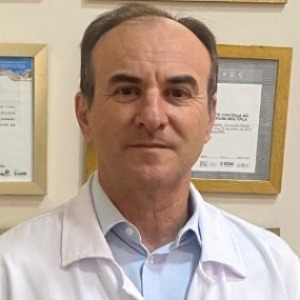Parkinsonian Disorders
Parkinsonian disorders (PD), also known as Parkinsonism, are a group of neurological conditions characterized by the presence of motor and non-motor symptoms. The primary motor symptoms of PD include tremors, slowness of movement (bradykinesia) and stiffness, as well as limb shaking (rigidity). PD is a progressive disorder; over time, other non-motor symptoms such as changes in cognition, mood, and sensory functioning, may emerge. PD is the most common cause of parkinsonism. It is caused by a loss of neurons producing the neurotransmitter dopamine in a region of the brain called the substantia nigra. When dopamine-producing neurons die, an imbalance occurs in the brain’s glutamate, acetylcholine, and gamma-aminobutyric (GABA) systems. This leads to disruption to the regulation of movement and other processes in the brain, causing the Parkinsonian symptoms. Although there is no cure for PD, various treatments are available to help alleviate the symptoms or slow the progression of the condition. These treatments may include medications, surgical procedures, physical therapy, and lifestyle changes. Medications focus on restoring or substituting for dopamine. Parkinson's drugs, such as levodopa or dopamine agonists, replace lost dopamine. Additionally, drugs that act to increase the amount of available dopamine or improve its efficiency can be used. Surgical procedures like deep brain stimulation and thalamotomy attempt to alleviate symptoms by targeting parts of the brain to correct the dopamine deficiency. Physical therapy can help people with PD by improving their mobility and balance. Other lifestyle changes that may help individuals cope with PD and its symptoms include exercise, diet modification, and stress reduction. Overall, PD is a complex and devastating condition that affects a person's ability to move and affects their day to day life. However, with the right combination of treatments, an individual with PD can live a full and meaningful life.

Ken Ware
NeuroPhysics Therapy Institute, Australia
Robert B Slocum
University of Kentucky HealthCare, United States
Yong Xiao Wang
Albany Medical College, United States
W S El Masri
Keele University, United Kingdom
Jaqueline Tuppen
COGS Club, United Kingdom
Milton Cesar Rodrigues Medeiros
Hospital Santa Casa de Arapongas, Brazil




Title : Perception and individuality in patient cases identifying the ongoing evolution of Myalgic Encephalomyelitis/Chronic Fatigue Syndrome (ME/CFS)
Ken Ware, NeuroPhysics Therapy Institute, Australia
Title : Narrative medicine: A communication therapy for the communication disorder of Functional Seizures (FS) [also known as Psychogenic Non-Epileptic Seizures (PNES)]
Robert B Slocum, University of Kentucky HealthCare, United States
Title : Personalized and Precision Medicine (PPM), as a unique healthcare model through biodesign-driven biotech and biopharma, translational applications, and neurology-related biomarketing to secure human healthcare and biosafety
Sergey Victorovich Suchkov, N.D. Zelinskii Institute for Organic Chemistry of the Russian Academy of Sciences, Russian Federation
Title : Neuro sensorium
Luiz Moutinho, University of Suffolk, United Kingdom
Title : Traumatic Spinal Cord Injuries (tSCI) - Are the radiologically based “advances” in the management of the injured spine evidence-based?
W S El Masri, Keele University, United Kingdom
Title : Scalp acupuncture with functional electrical stimulation for the treatment children with autism spectrum disorder
Zhenhuan Liu, Guangzhou University of Chinese Medicine, China